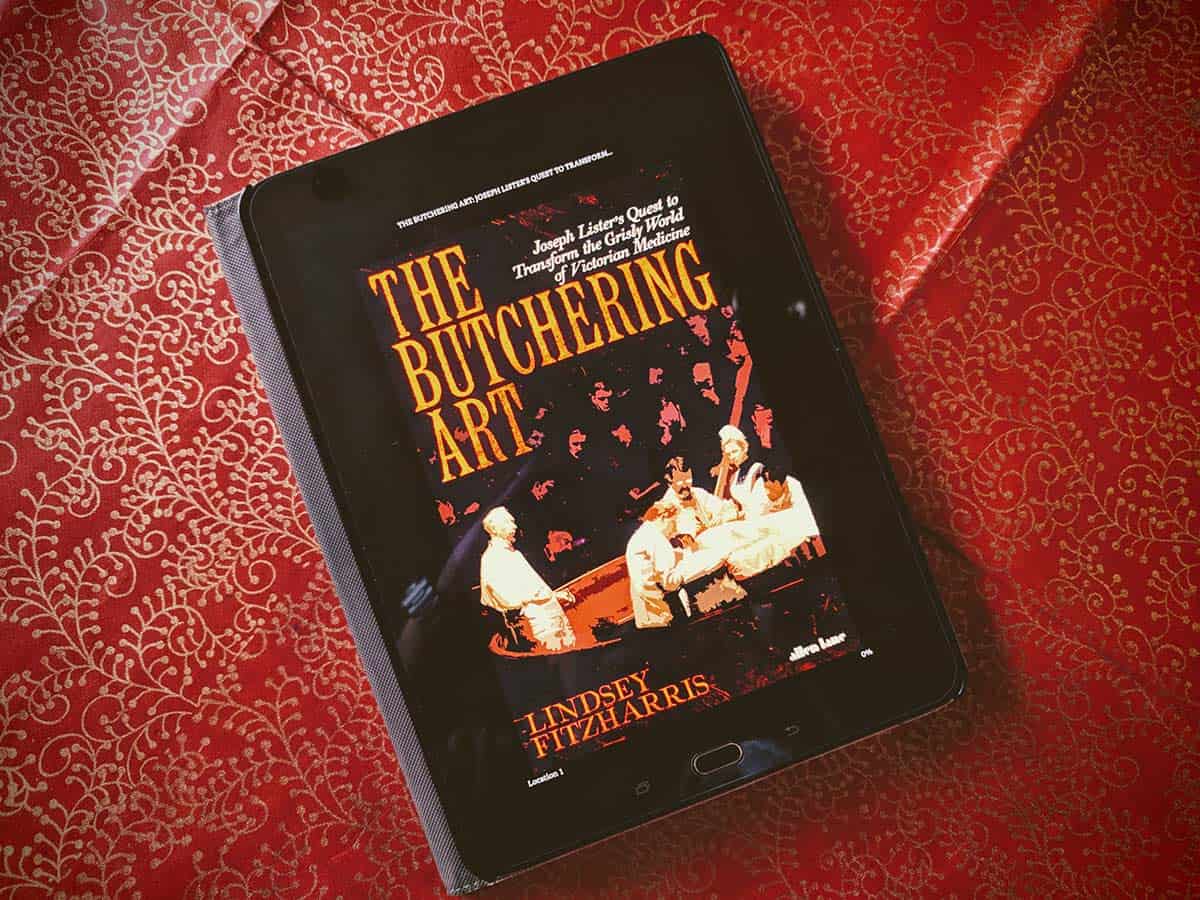These days a small cut wouldn’t warrant a trip to the hospital, let alone a trip to the local doctor. You’d clean the wound with antiseptic before wrapping it up, leaving it to heal in a couple of days. But 150 years ago, a small cut could be a death sentence, without modern antiseptics to clean the wound.
The Butchering Art by Lindsey Fitzharris documents the life of Joseph Lister, pioneering surgeon and father of antisepsis. You might recognise his name from products like Listerine, but he’s not actually the inventor of the now famous mouth wash. Instead Lister, working from Pasteur’s germ theory, created a process for the clean hospital to reduce post-operative bacteria and infections.
To set the scene, Victorian era hospitals were a literal cesspool of infection. Dogs and rats under operating tables. Human organs on the floor. Not to mention the piss and the encroaching dead from nearby cemeteries. Fitzharris does a neat job of setting up the effluent world of Victorian medicine. This book is not for the squeamish. Tales of violent hand-held amputations, mastectomies and tumor operations without anaesthesia. It’s a wonder people lived through any operations at all.
Following these operations was the threat of hospital infections. Gangrene, erysipelas, septicemia and pyemia made for a delightful cocktail of ulcers, pus and blood.
Surgery was not the highly-paid profession that it is today. It evolved from local barbers who would perform operations. Yet this particular era sees the coming together of both scientific rigour and practical operations, something that Lister particularly valued with his emphasis on using the microscope to study surgery (surprisingly laughable in the era – I mean who would ever use a microscope for science?).
This short book is a little top heavy on exposition of the era, such as detail on the World’s Fair and deportation of criminals to Australia. It’s when the book gets deeply into Lister’s life that it shines. Born to Quaker parents, science was one of the few areas of entertainment available to Lister. This childhood passion followed through to Lister’s adult decision to study medicine. While you’re not going to find any rock n’ roll tales of dodgy doctors a la The Knick, there’s plenty of gruesome details to make up for any lack of controversy in Lister’s home life.
What’s inspiring about Lister’s life was his near-reluctance to become a surgeon, a career choice encouraged by his scientific father and surgical mentors. It’s a tribute to the power of having good people in your life. I would have liked to read more about his failures as well as his successes. His obsession with carbolic acid became troublesome for those in his operating theatre. But in the end, Lister’s choice has saved millions of lives, and transformed hospitals as we know them.
There are very few books in recent years on Victorian medicine. The Butchering Art is a valuable contribution to a rarely covered topic. I really appreciate the depth of the research evident in the detailed bibliography, which will make a wonderful starting point for my own fictional research in the era. If you’re interested in this period, I also recommend reading a hard copy of Crucial Interventions: An Illustrated Treatise on the Principles & Practice of Nineteenth Century Surgery.
I received a free copy of this book from Netgalley in exchange for an honest review.

Share your thoughts